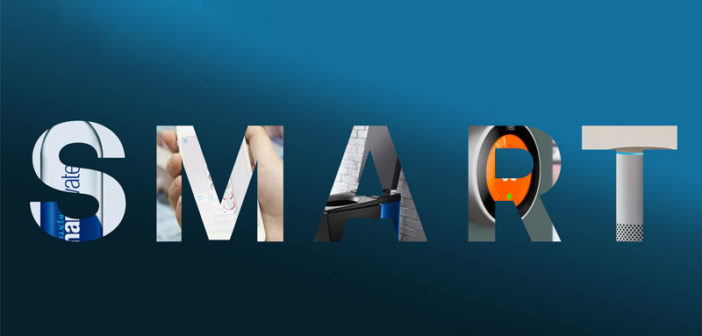In today’s world, digital transformation is realising levels of creativity and productivity that once could only be imagined.
Across industries, we’re seeing the word ‘smart’ applied to all kinds of new/reinvented products and ways of doing things. We at Hexagon have been talking a lot about the Smart Factory and how it will transform manufacturing, delivering unprecedented levels of productivity and customisation.
Watching this year’s Hexagon Manufacturing Intelligence keynote at HxGN LIVE got me thinking: what exactly is Smart nowadays, and how do we know when we need to be Smart?
When Smart is Stupid
No doubt, technological innovation has played a crucial role in increasing quality of life around the globe. But smart technologies do this by helping users make intelligent decisions. Some ‘smart’ products seem intent on making us dumb, while charging high prices to ‘solve’ minor or even non-existent problems.
For example, the smartification trend has precipitated a staggering range of digitised umbrellas, which inform you via mobile app notifications if you need your umbrella that day. Never again will we have to exhaust ourselves by googling the weather or looking out a window.
The numerous smart water bottles on the market remind you via Bluetooth if you aren’t drinking enough. This is great news since evolution could only come up with impossibly ambiguous biological hints at dehydration, like dizziness, a mouth dry as sandpaper, or, you know… thirst.
Then there’s Smalt, the world’s first smart salt dispenser. With a simple voice activation or swipe of the app, users can get a ‘shake, pinch, or pour’ of salt dispensed into a tray at its base. But this more cumbersome way of dispensing salt isn’t all it offers. It’s a ‘great way to entertain guests’ with its Bluetooth speaker and mood lighting. Stay tuned for the smart pepper shaker that automatically fills awkward silences at the dinner table with observations about the weather.
The moral of this story: not everything needs to be ‘smartified’.
When Smart is Smart
On the other hand, smartification can help fulfill clear needs or desires in ways that improve lives in some way.
For example, you have the Nest range of products that improve safety, security, or comfort in the home: whether that’s smoke alarms that can be silenced via phone, video doorbells that recognise familiar faces, or security cameras that notify your phone when someone is within 15 metres of your house. Clearly, such innovations are giving users useful information to make more efficient and informed decisions about their lives.
Likewise, the voice-controlled speaker Amazon Echo can be used to establish a smart connected ecosystem in the home. Users can adjust their thermostat, turn on lights, play music, lock doors, order pizza, and more all with simple voice commands. The Alexa Guard functionality detects the sound of smoke alarms or breaking glass when users are out the house, sending a notification to their mobile devices, which customers can use to connect to the Amazon Echo to monitor their home’s activity in real-time. Self-optimisation is a crucial element of Smart technology, and updates through the cloud mean the product is frequently updated and getting smarter.
The Smart Factory
Smartification can be revolutionary, changing entire businesses and industries. Nowhere is this more evident than the Smart Factory.
The Smart Factory enhances manufacturing productivity by deploying autonomous, connected technologies that enable greater collaboration, flexibility, and responsiveness. As its core, the Smart Factory converges the digital and physical worlds of manufacturing, allowing businesses to simulate entire product lifecycles and connect all stakeholders at each stage to save time, reduce resource wastage, and make continuous improvements.
This all relies on leveraging truly smart technologies and digital solutions that build intelligence into factory processes, such as automated systems capable of machine learning. Manufacturers are able to leverage untapped data with internet of things (IoT) technology, which enables real-time asset and process visibility and analysis for more informed, responsive decision-making and predictive control.
The communication of this actionable information is streamlined with cloud-based data handling, which allows manufacturers to break down silos, connecting design and engineering, production, and metrology solutions for greater efficiency throughout operations. A fully mature Smart Factory can extend this connectivity to customers and the supply chain.
Automation is pushed even further in the Smart Factory with the use of cyber-physical systems. Communication between integrated software and robotic technologies allows for greater efficiency and unprecedented levels of customisation.
So how do we make sure that we are being smart about the Smart Factory? Watch the video below to learn more about what the Smart Factory looks like and how you can unlock the ‘smart’ that might be hiding in your factory.















